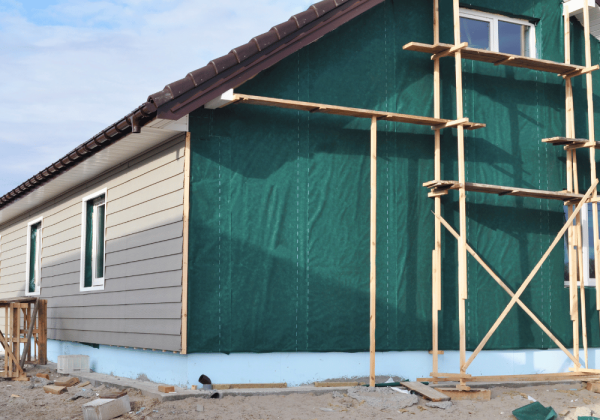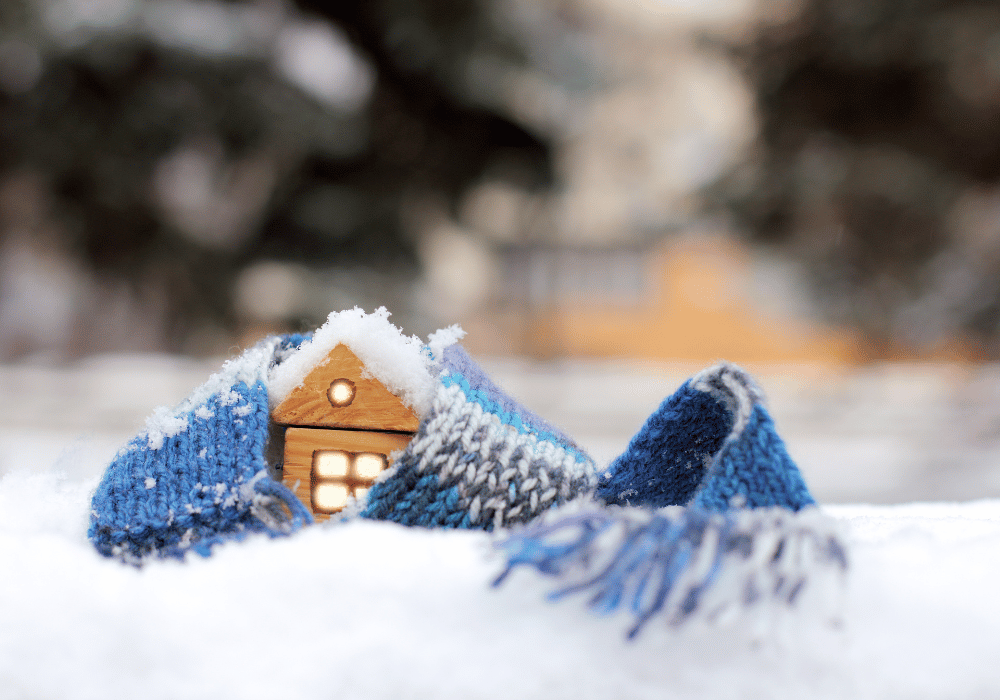Winter is coming, and with it comes a unique set of challenges for homeowners looking to renovate. While the cold season might not seem like the optimal time for construction projects, understanding how cold weather affects home renovation can be crucial for anyone planning to update their space during these chilly months. Whether you’re upgrading your kitchen, adding an extension, or simply refreshing your interiors, knowing what to expect and how to prepare can make all the difference.
In this blog post, we’ll explore how cold weather impacts renovation tasks, highlight the importance of strategic planning, and provide insights into materials and techniques best suited for winter projects. By the end, you’ll be equipped with the knowledge needed to tackle your renovations head-on, ensuring a smooth process from start to finish.
 Why Winter Renovation Planning Matters
Why Winter Renovation Planning Matters
Many homeowners are unaware of how significantly winter weather can hinder renovation efforts. Just as snowstorms can disrupt travel plans, they can also delay deliveries of materials critical to your project. Cold temperatures can affect everything from paint drying times to the curing of concrete, making it essential to keep these factors in mind when setting project timelines.
Understanding winter’s impact on home renovation is vital to avoid costly setbacks. By anticipating potential challenges, you can take preemptive measures to mitigate them. This not only saves time and money but also ensures your home’s structural integrity and aesthetic appeal are maintained throughout the renovation process.
Additionally, planning your renovation projects with winter conditions in mind helps maintain the safety of those involved. Slippery surfaces, freezing equipment, and other hazards are more prevalent during colder months, necessitating a strategic approach to ensure everyone remains safe on-site.
Weather Challenges and Their Impact on Renovation
The Chill Factor
Cold temperatures pose several challenges for home renovations. When mercury dips, many construction materials react differently. For instance, paint and adhesives can lose effectiveness in extreme cold, leading to subpar results. Similarly, concrete may take longer to cure, jeopardizing the strength and durability of your project.
Freezing weather can also affect outdoor construction tasks. Roofing, siding, and masonry work become particularly challenging in icy conditions. Homeowners should be aware that certain tasks may have to be postponed, resulting in schedule delays and requiring flexibility in planning.
Snow and Ice Woes
Winter’s snow and ice can create obstacles for renovation projects. Accumulating snow can block access to critical areas and make it difficult for workers to move about safely. Ice buildup can also pose serious risks, particularly on roofs and scaffolding, where slips and falls become more likely.
Beyond physical barriers, snow and ice conditions can lead to increased energy consumption to maintain optimal working temperatures indoors. This may drive up costs, impacting your renovation budget. It’s essential to factor in these potential expenses when planning your winter project.
Moisture Management
The winter season is notorious for increased moisture levels, which can wreak havoc on renovation sites. Dampness can lead to mold growth, cause wood to warp, and even damage electrical systems. These issues demand prompt attention, as they can compromise the success of your renovation if left unchecked.
Homeowners must consider moisture management strategies early in the planning process. Ensuring proper insulation, using moisture-resistant materials, and maintaining adequate ventilation can help keep these concerns at bay, preserving the longevity of your renovations.
Planning Strategies for Winter Renovations
Timing Is Everything
Timing is critical when planning a winter renovation. Begin by identifying tasks that must be completed before the onset of severe weather. For example, exterior work would benefit from being scheduled and completed during milder fall conditions to avoid complications from snow and ice.
Consider breaking your project into phases, focusing on indoor tasks during the height of winter. Kitchens, bathrooms, and basements are excellent candidates for inside work, as they can be insulated from the elements more effectively than outdoor projects. This phased approach ensures ongoing progress despite potentially adverse weather.
Selecting the Right Contractor
Choosing a contractor experienced in winter renovations can make a world of difference in navigating seasonal challenges. An adept professional will understand the unique demands of cold weather projects, providing valuable guidance on scheduling and material selection.
Look for contractors with a proven track record of successful winter projects. Seek recommendations, review portfolios, and, if possible, visit completed sites to assess workmanship quality first-hand. Partnering with the right contractor can save time, money, and stress.
Communication Is Key
Effective communication is vital for any renovation project, especially during the winter months. Maintain open lines of dialogue with your contractor to discuss weather-related concerns, progress updates, and any necessary adjustments to the schedule or budget.
Regular communication allows for proactive problem-solving and ensures everyone remains aligned with project goals and expectations. This collaboration fosters a positive working relationship and contributes to a smoother renovation experience.
Best Materials and Techniques for Cold Weather
 Cold-Resistant Materials
Cold-Resistant Materials
Selecting materials that withstand winter conditions is essential for successful renovations. Look for products specifically designed for cold weather applications, such as cold-weather concrete additives, insulated siding, and weather-resistant paint.
Opt for materials that perform well in fluctuating temperatures. Vinyl and composite materials are excellent choices for outdoor projects, as they resist warping, cracking, and moisture damage better than traditional wood or metal options.
Innovative Techniques
Some construction techniques are better suited for cold weather conditions. Prefabrication, for example, involves assembling components off-site, minimizing the time spent working outdoors in adverse conditions. This method not only accelerates project timelines but also reduces exposure to weather-related risks.
Another technique is heat-assisted curing for concrete and adhesives. By using heated enclosures or portable heaters, contractors can create a controlled environment that promotes proper curing and adhesion, ensuring the quality and durability of the finished product.
Insulation and Ventilation
Proper insulation and ventilation are vital for maintaining a comfortable and functional renovation site during winter. Invest in high-quality insulation materials to keep indoor areas warm and energy-efficient. Adequate ventilation prevents excess moisture buildup and reduces the risk of mold growth.
Sealing gaps and cracks around windows, doors, and other openings can also enhance energy efficiency by minimizing drafts. These measures contribute to a healthier and more comfortable environment for both workers and residents, safeguarding the success of your renovation.
Budgeting and Scheduling for Winter Projects
Expect the Unexpected
Winter weather is notoriously unpredictable, so it’s essential to build flexibility into both your budget and schedule. Allocate extra time and resources to account for potential delays caused by snow, ice, or cold temperatures.
Contingency planning helps mitigate the risk of unforeseen expenses that may arise during your renovation. Set aside a portion of your budget as a safety net to cover unexpected costs, ensuring financial stability throughout the project.
Research and Compare Costs
Researching costs and comparing estimates from multiple contractors is a smart strategy to ensure you receive the best value for your investment. Some contractors offer discounts during the off-season, presenting an opportunity to save money while still securing quality services.
Factor in additional expenses such as heating, insulation, and weatherproofing, as these elements can significantly impact your budget. Comprehensive research and careful planning can help you make informed decisions and stretch your budget further.
Time Management
Efficient time management is crucial when navigating winter renovations. Create a detailed project timeline and monitor progress closely to ensure tasks are completed on schedule. Adjust timelines as needed to accommodate unforeseen weather-related challenges.
Prioritize tasks based on seasonal conditions. By tackling indoor projects during the coldest months and reserving outdoor work for milder periods, you can maintain momentum and minimize disruptions caused by winter weather.
Winter doesn’t have to be a roadblock for your home renovation dreams. With careful planning and consideration of the unique challenges posed by cold weather, you can transform your space successfully and safely. By understanding how winter impacts renovation projects, selecting the right materials and techniques, and implementing strategic planning strategies, homeowners can achieve stunning results even in the chill of winter.
Don’t wait for spring to start your renovation projects—begin planning today to ensure a seamless transition from concept to completion. And for homeowners seeking professional assistance, consulting with experienced contractors and industry experts can provide invaluable insights to help turn your vision into reality.

